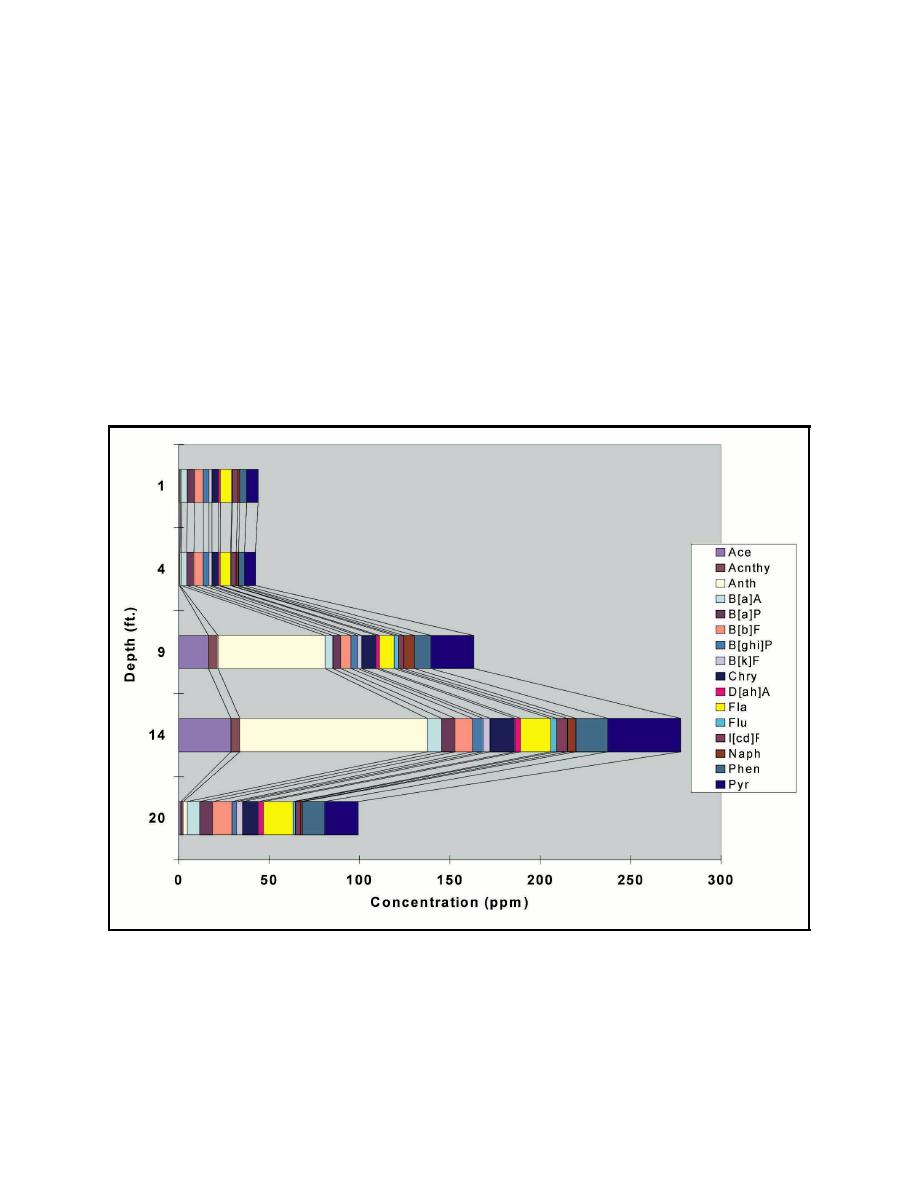 |
||
|
|
||
|
Page Title:
Figure 1. PAH concentrations with depth at Milwaukee CDF, Milwaukee, WI |
||
| |||||||||||||||
|
|
 Technical Note DOER-C5
September 1999
In the Great Lakes, vegetation quickly covers the exposed dredged material, and the resulting
evapotranspiration assists dewatering.
CDF closure studies conducted by the Detroit District have shown that organic contaminant
concentrations in CDFs tend to be reduced in the upper unsaturated zone, whereas contaminant
concentrations remain unchanged in the saturated zone. For example, PAH analysis of samples
from six borings in the Milwaukee CDF shows that the upper layers are less contaminated than the
lower layers (Figure 1). Although variations in contamination levels in the dredged material
disposed over two decades could account for the profiles shown in Figure 1, the fact that the most
recently dredged material has been placed in the open-water area of the CDF (Figure 2) suggests
that this is not the case. The profiles are more consistent with the top-down, self-cleaning hypothesis
(Myers 1996) involving intrinsic biodegradation and clearly show that the top meter of material is
substantially cleaner than the material lower down in the CDF. Similar contaminant levels with
depth profiles have been observed at the Renard Island CDF in Green Bay, WI.
Figure 1. PAH concentrations with depth at Milwaukee CDF, Milwaukee, WI
PAHs appear to be biodegradable compounds (Herbes and Schwall 1978; Cerniglia 1984; Bauer
and Capone 1985; Mihelcic and Luthy 1988; Lewis 1993; Jones, Araujo, and Rogers 1996), but
only under optimal conditions. Typically, the sediment or soil must have an abundant supply of
oxygen, nutrients, and moisture. Fortunately, polluted dredged material is typically high in macro
2
|
|
Privacy Statement - Press Release - Copyright Information. - Contact Us - Support Integrated Publishing |